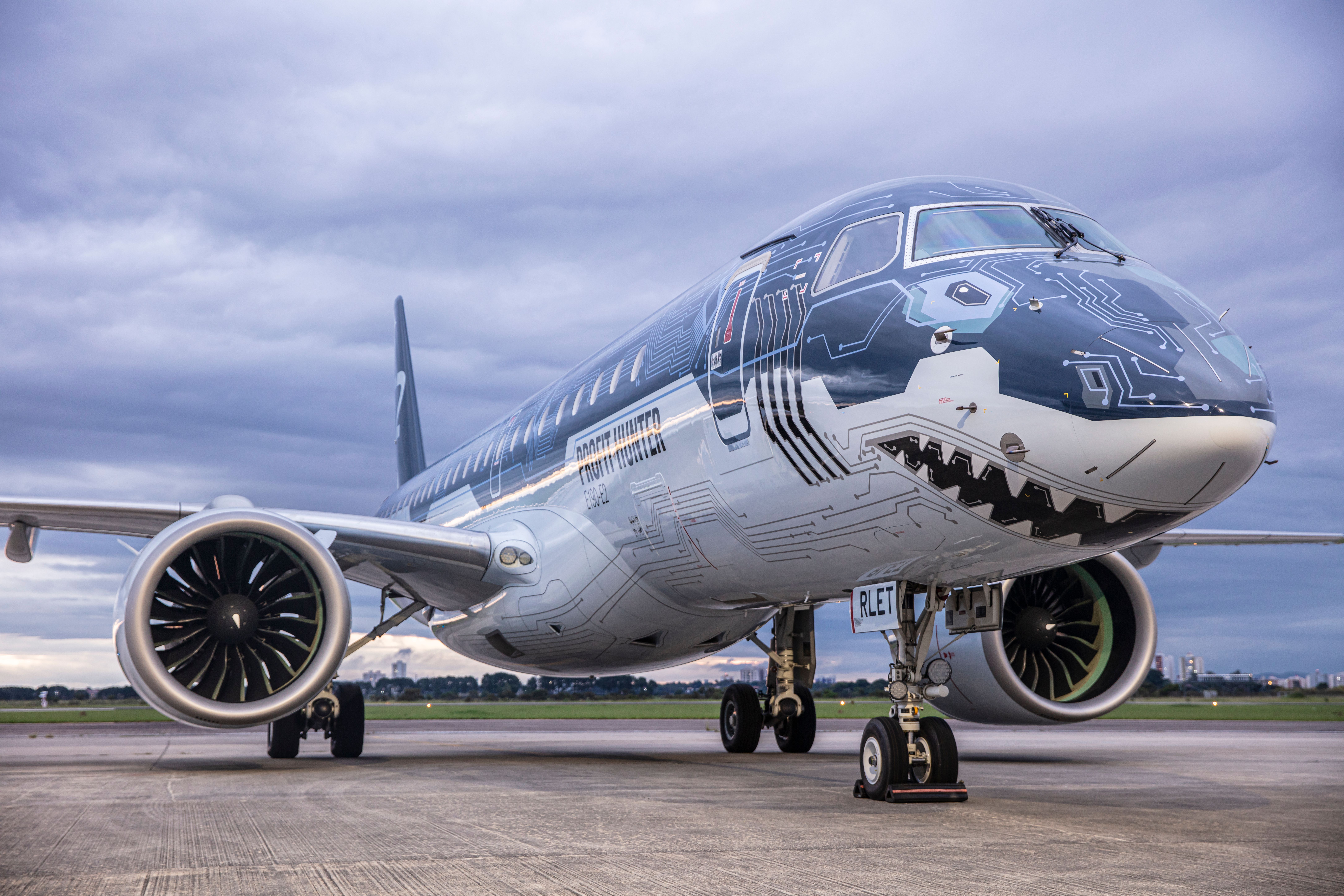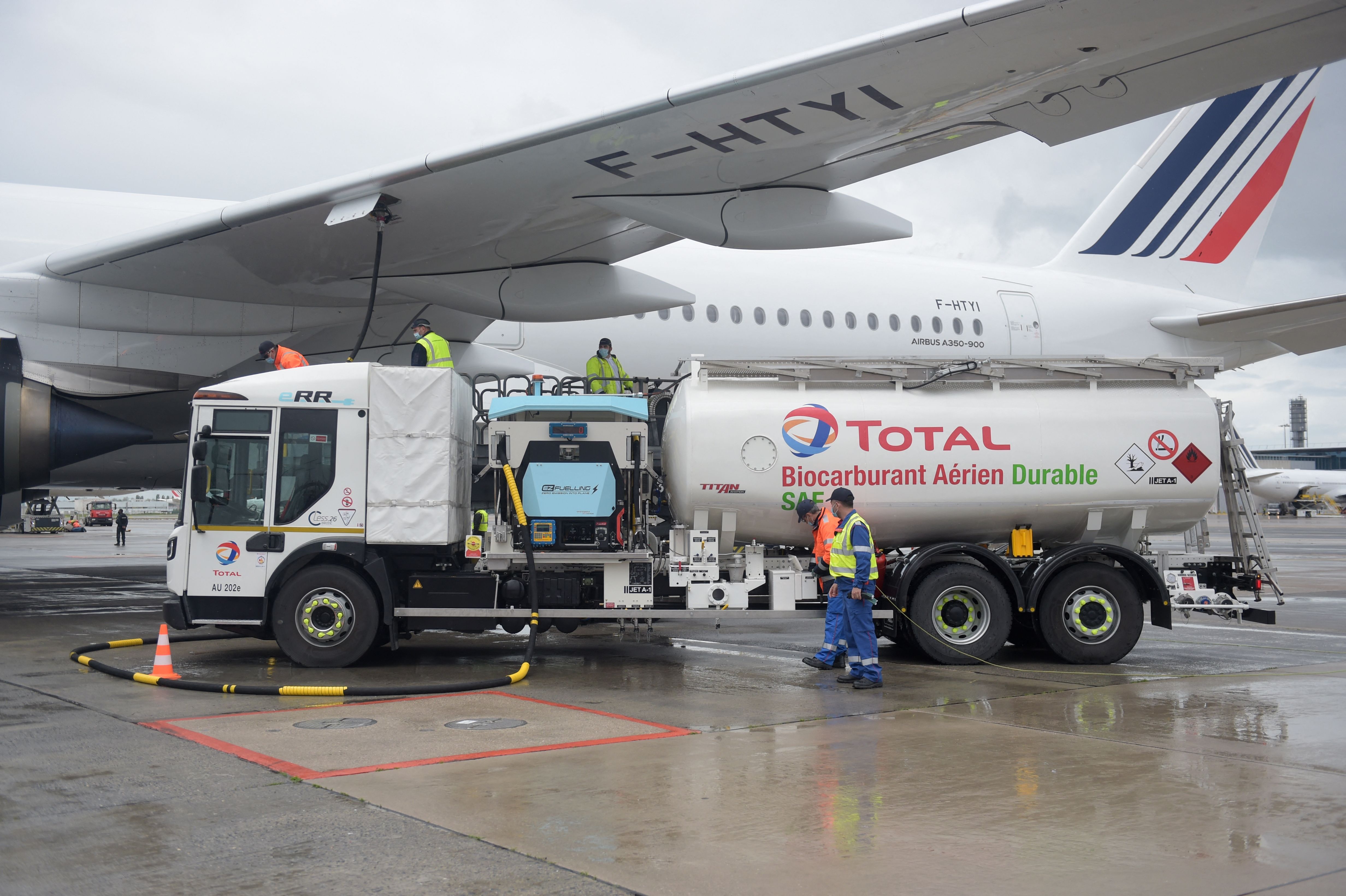On Thursday, Pratt & Whitney and Embraer announced they have successfully tested a GTF-powered Embraer E195-E2 aircraft on 100% sustainable aviation fuel (SAF). The test is a step forward toward scaling up SAF production and consumption worldwide as the airline industry looks to become greener. Let’s investigate further.
Pratt & Whitney and Embraer’s partnership
Both companies held a flight test onboard Embraer’s emblematic Tech Lion Profit Hunter, an E195-E2 that has toured the world showcasing the family aircraft. The test was operated with one engine running on 100% SAF and validated that GTF engines and the E-Jets E2 family can fly on both engines with blends of up to 100% SAF without compromising safety or performance.
The Tech Lion aircraft completed two days of ground tests at Fort Lauderdale International Airport (FLL), Florida, culminating in a 70-minute flight test at Varo Beach Regional Airport.
Rodrigo Silva e Souza, vice president of Strategy and Sustainability at Embraer Commercial Aviation, said,
“The E2 is already the most efficient single-aisle aircraft flying today, saving up to 25% CO2 emissions compared to previous generation aircraft. This reduction in emissions can be increased up to an impressive 85% with 100% SAF. Replacement of older aircraft by new-generation products and scaling up SAF production are the two most effective actions commercial aviation can take now to reduce emissions significantly.”
Plugging the gap
True Zero-carbon solutions for the airline industry won’t be around for the next 30 years. While the technology evolves, SAF will need to plug the gap and function as a solid interim solution to the aviation CO2 emissions.
Last year, Embraer and Pratt & Whitney signed a memorandum of understanding regarding testing 100% SAF fuels.
According to ASTM International specifications, aircraft can only fly on a maximum of a 50/50 blend of sustainable and traditional fossil fuels. Both companies expect future specifications will enable blends of up to 100% SAF to maximize the emissions reduction potential of using fuel derived from sustainable, non-fossil-based feedstocks.
Graham Webb, chief sustainability officer at Pratt & Whitney, added,
“SAF is a core part of our sustainability road map, and we continue to work with industry partners and regulators to support the development of a drop-in standard for 100% SAF. This test proves that GTF engines can operate on any fuel and that the E-Jets E2 family is ready for 100% SAF certification once the industry finalizes the standard for unblended SAF.”
The sustainable aviation fuel used by both companies was 100% Hydroprocessed Esters and Fatty Acids Synthetic Paraffinic Kerosine (HEFA-SPK), acquired from World Energy.
SAF’s future
Sustainable aviation fuel is predicted to make up the most significant percentage of the airline industry’s quest for net-zero emissions by 2050. According to IATA, it will make up 65% of the contributions to this goal. The remaining 35% will be made up of new technologies, improving infrastructure and airline operations, and offsetting emissions. The SAF industry is expected to reach over US$15 billion by the end of this decade.
Several companies, such as Neste, World Energy, Alder Fuels, and SkyNRG are already producing and blending SAF for airlines worldwide.
What do you think about Embraer and Pratt & Whitney’s SAF test flight? Let us know in the comments below.

.jpg)

.jpg)
